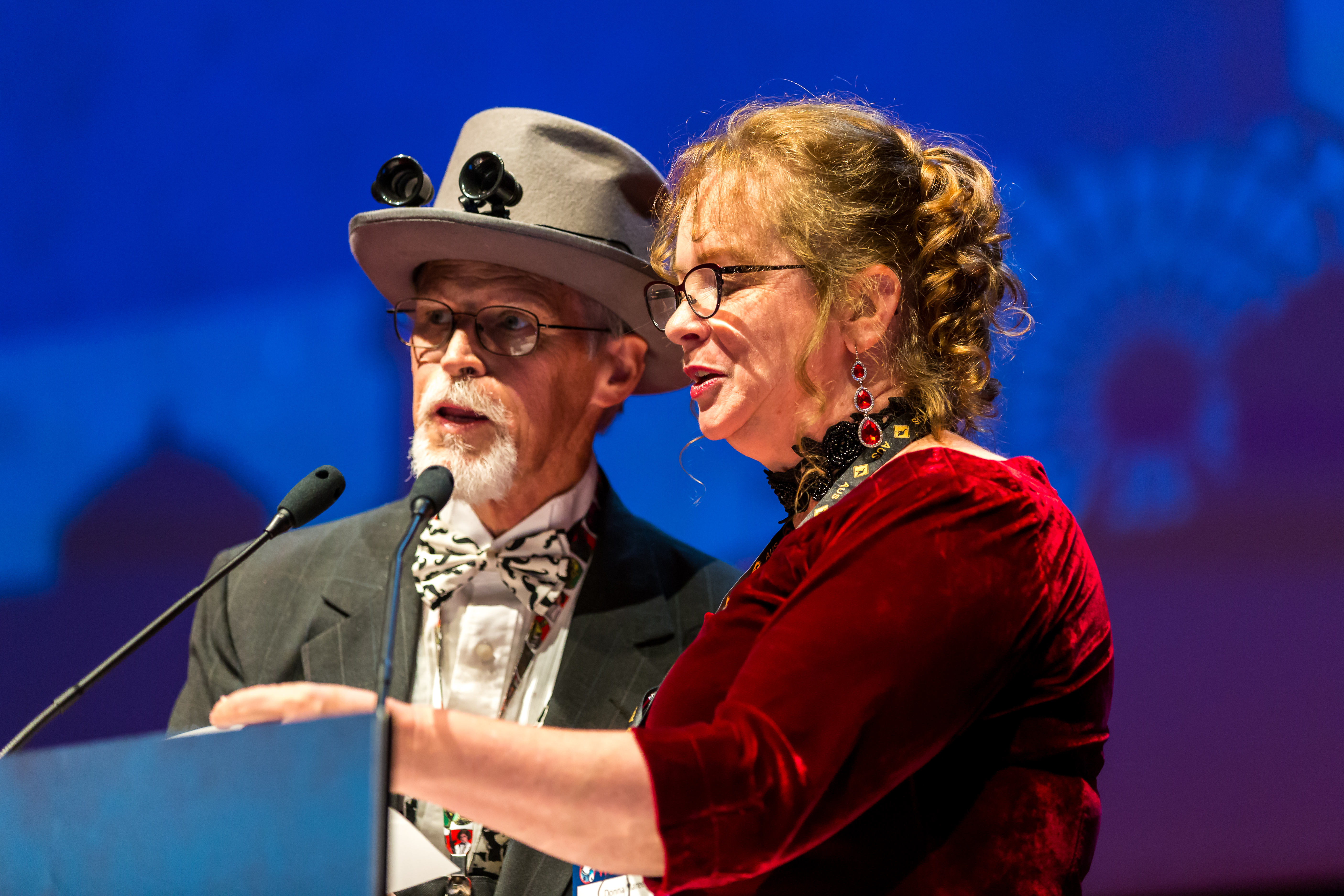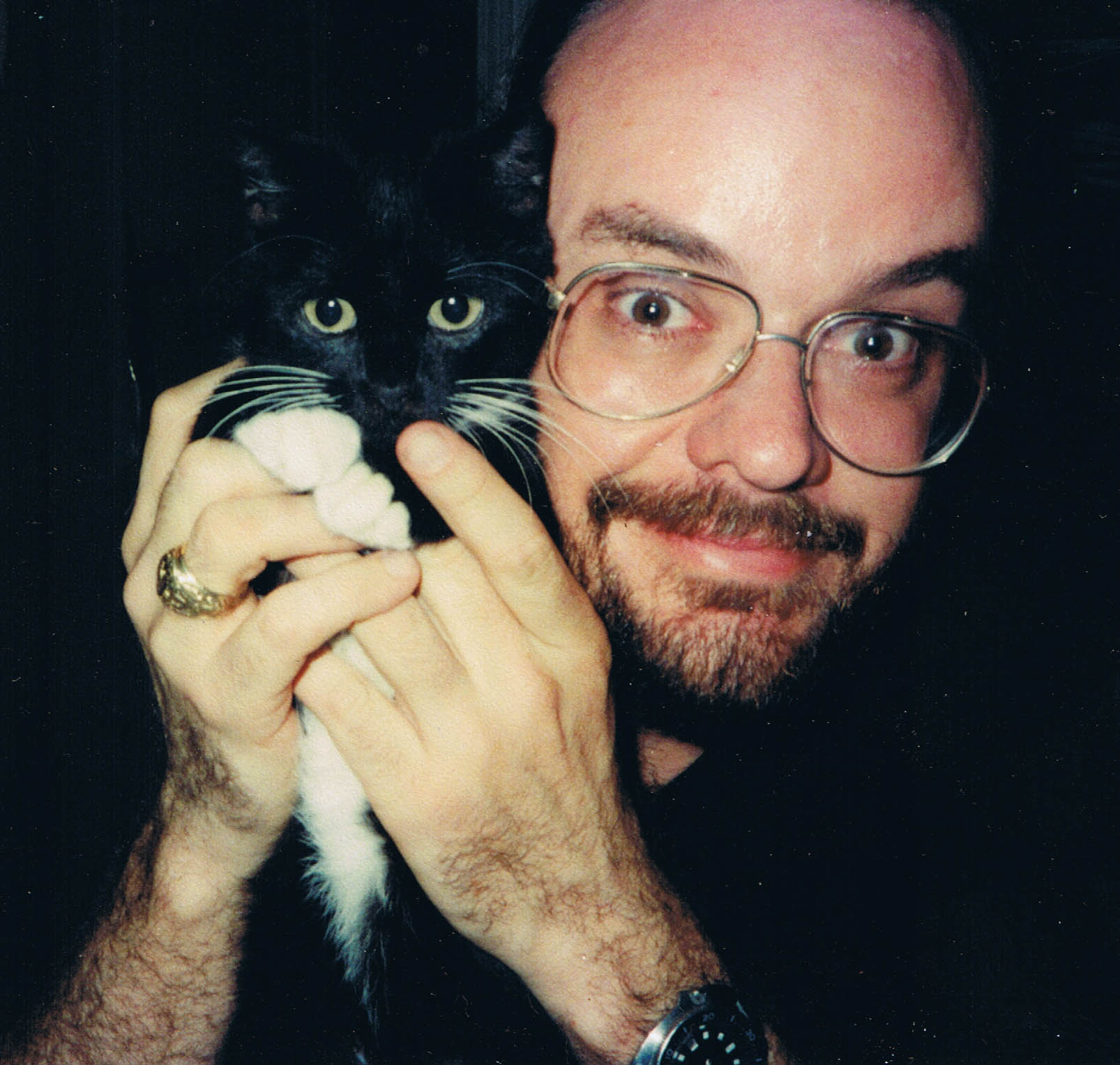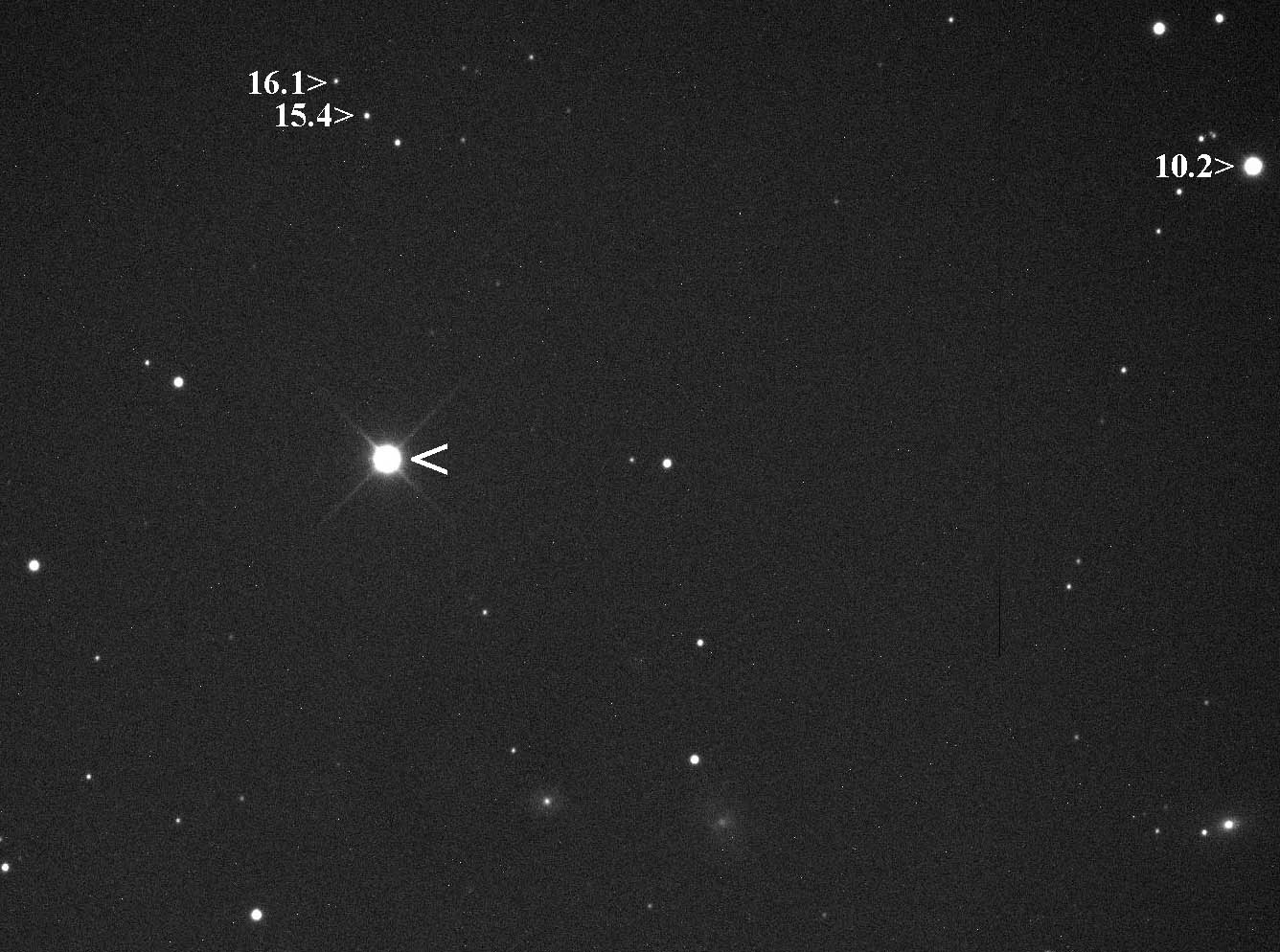|
Arthur Thomson (fanzines)
Arthur Thomson (1927–1990) was a British artist and writer, a highly regarded member of British science fiction fandom from the 1950s onwards, both as a fanzine writer/editor and prolific artist (under the name "ATom"). Resident illustrator for the influential fanzine ''Hyphen'', he won the TransAtlantic Fan Fund in 1964 and visited the United States (an event he wrote up for the following year's ''ATom Abroad'' ). Thomson was nominated five times for the Hugo Award The Hugo Award is an annual literary award for the best science fiction or fantasy works and achievements of the previous year, given at the World Science Fiction Convention and chosen by its members. The Hugo is widely considered the premier ... for Best Fan Artist, but never won. Nearly two decades after his death, Thomson's distinctive artwork still appears in such fanzines as the Hugo-nominated, Nova Award-winning ''Banana Wings''. After Thomson won the 2000 Rotsler Award, it was decided not to present ... [...More Info...] [...Related Items...] OR: [Wikipedia] [Google] [Baidu] |
Science Fiction Fandom
Science fiction fandom or SF fandom is a community or fandom of people interested in science fiction in contact with one another based upon that interest. SF fandom has a life of its own, but not much in the way of formal organization (although formal clubs such as the Futurians (1937–1945) and the Los Angeles Science Fantasy Society (1934–present) are recognized examples of organized fandom). Most often called simply "fandom" within the community, it can be viewed as a distinct subculture, with its own literature and jargon; marriages and other relationships among fans are common, as are multi-generational fan families. Origins and history Science fiction fandom started through the letter column of Hugo Gernsback's fiction magazines. Not only did fans write comments about the stories—they sent their addresses, and Gernsback published them. Soon, fans were writing letters directly to each other, and meeting in person when they lived close together, or when one o ... [...More Info...] [...Related Items...] OR: [Wikipedia] [Google] [Baidu] |
Science Fiction Fanzine
A science-fiction fanzine is an amateur or semi-professional magazine published by members of science-fiction fandom, from the 1930s to the present day. They were one of the earliest forms of fanzine, within one of which the term "''fanzine''" was coined, and at one time constituted the primary type of science-fictional fannish activity ("fanac"). Origins and history The first science-fiction fanzine, ''The Comet'', was published in 1930 by the Science Correspondence Club in Chicago. The term "fanzine" was coined by Russ Chauvenet in the October 1940 issue of his fanzine ''Detours''. in "Science Fiction Citations" for the Oxford English Dictionary "Fanzines" were distinguished from "prozines", that is, all professional s. Prior to t ... [...More Info...] [...Related Items...] OR: [Wikipedia] [Google] [Baidu] |
Hyphen (fanzine)
''Hyphen'' was an Irish science fiction fanzine, published from 1952-1965 by Walt Willis in collaboration with James White, Bob Shaw and various others (Chuck Harris, Vincent Clarke, Arthur Thomson, Ian McAuley and Madeleine Willis). Over that period, they published 36 issues (one including a separate 'Literary Supplement'). In addition, a 37th issue was created by the Willises in 1987 to celebrate the 40th anniversary of Irish science fiction fandom. ''Hyphen'' was nominated for the Hugo Award for Best Fanzine in 1957 and 1959; and for the 1954 Retro-Hugo (In 1958 editor Willis was awarded 1958 Hugo Award as 'Outstanding Actifan' ctive fan which replaced the Best Fanzine category that year.) ''Hyphen'' was considered one of the pivotal fanzines of its era for its humour and wit contributed by writers such as Willis and illustrators such as Thomson (aka 'ATom'). Science fiction fan, critic and author Damon Knight Damon Francis Knight (September 19, 1922 – April 15, 20 ... [...More Info...] [...Related Items...] OR: [Wikipedia] [Google] [Baidu] |
TransAtlantic Fan Fund
The Trans-Atlantic Fan Fund, often known as ''TAFF'', is a crowdfunding project created in 1953 for the purpose of providing funds to bring well-known and popular members of science fiction fandom familiar to fans on both sides of the ocean, across the Atlantic. History The first international fan fund, the ''Big Pond Fund'', was established to get Ted Carnell to the 1947 Worldcon, though it was the 1949 Worldcon he eventually attended. TAFF's roots lie in the successful effort to bring Walt Willis to the 1952 Worldcon in Chicago. Willis published the founding document for TAFF in ''Hyphen'' 4 (October 1953) following a discussion with "the available leaders of British fandom" at that year's Coroncon. Since that time TAFF has regularly brought North American fans to European conventions and European fans to North American conventions. The success of TAFF has inspired other regular fan funds between North America and Australia, Europe and Australia, and even Eastern and W ... [...More Info...] [...Related Items...] OR: [Wikipedia] [Google] [Baidu] |
Hugo Award
The Hugo Award is an annual literary award for the best science fiction or fantasy works and achievements of the previous year, given at the World Science Fiction Convention and chosen by its members. The Hugo is widely considered the premier award in science fiction. The award is administered by the World Science Fiction Society. It is named after Hugo Gernsback, the founder of the pioneering science fiction magazine ''Amazing Stories''. Hugos were first given in 1953, at the 11th World Science Fiction Convention, and have been awarded every year since 1955. The awards were originally given in seven categories. These categories have changed over the years, and the award is currently conferred in seventeen categories of written and dramatic works. The winners receive a trophy consisting of a stylized rocket ship on a base; the design of the trophy changes each year, though the rocket itself has been standardized since 1984. The Hugo Awards are considered "the premier award i ... [...More Info...] [...Related Items...] OR: [Wikipedia] [Google] [Baidu] |
Hugo Award For Best Fan Artist
The Hugo Award for Best Fan Artist is given each year for artists of works related to science fiction or fantasy which appeared in low- or non-paying publications such as semiprozines or fanzines. A Hugo Award for professional artists is also given. The Hugo Awards have been described as "a fine showcase for speculative fiction" and "the best known literary award for science fiction writing". The fan award was first presented in 1967 and has been awarded annually. Beginning in 1996, Retrospective Hugo Awards, or "Retro Hugos", have been available to be awarded for years 50, 75, or 100 years prior in which no awards were given. To date, Retro Hugo awards have been awarded for 1939, 1941, 1943—1946, 1951, and 1954, although only the 1946 and 1951 Retro Hugos received sufficient nominations for the Fan Artist Hugo to make the ballot. Hugo Award nominees and winners are chosen by supporting or attending members of the annual World Science Fiction Convention, or Worldcon, and the ... [...More Info...] [...Related Items...] OR: [Wikipedia] [Google] [Baidu] |
Hugo Award For Best Fanzine
The Hugo Award for Best Fanzine is given each year for non professionally edited magazines, or " fanzines", related to science fiction or fantasy which has published four or more issues with at least one issue appearing in the previous calendar year. Awards were also once given out for professional magazines in the professional magazine category, and since 1984 have been awarded for semi-professional magazines in the semiprozine category; several magazines that were nominated for or won the fanzine category have gone on to be nominated for or win the semiprozine category since it was established. The Hugo Awards have been described as "a fine showcase for speculative fiction" and "the best known literary award for science fiction writing". The award was first presented in 1955, and has been given annually since except for in 1958. A "fanzine" is defined for the award as a magazine that does not meet the Hugo award's criteria for a professional or semi-professional magazine. S ... [...More Info...] [...Related Items...] OR: [Wikipedia] [Google] [Baidu] |
Nova Awards
A nova (plural novae or novas) is a transient astronomical event that causes the sudden appearance of a bright, apparently "new" star (hence the name "nova", which is Latin for "new") that slowly fades over weeks or months. Causes of the dramatic appearance of a nova vary, depending on the circumstances of the two progenitor stars. All observed novae involve white dwarfs in close binary systems. The main sub-classes of novae are classical novae, recurrent novae (RNe), and dwarf novae. They are all considered to be cataclysmic variable stars. Classical nova eruptions are the most common type. They are likely created in a close binary star system consisting of a white dwarf and either a main sequence, subgiant, or red giant star. When the orbital period falls in the range of several days to one day, the white dwarf is close enough to its companion star to start drawing accreted matter onto the surface of the white dwarf, which creates a dense but shallow atmosphere. This atmospher ... [...More Info...] [...Related Items...] OR: [Wikipedia] [Google] [Baidu] |
William Rotsler
Charles William Rotsler () was an American artist, cartoonist, pornographer and science fiction author. Rotsler was a four-time Hugo Award winner and one-time Nebula Award nominee. Rotsler's papers including dozens of matted color drawings, unpublished manuscripts and sketchbooks of original artwork are part of the Eaton collection at University of California, Riverside. Career Pornography From 1958, Rotsler was involved in the pornography industry, first as a stills photographer on the set of adult films, and later as a film director and actor. In 1966, Rotsler created ''Adam Film Quarterly'', later called ''Adam Film World'', as a sibling magazine to Knight Publishing's ''Adam'' magazine. ''Adam Film Quarterly'' featured female nudity but only simulated sex acts. The magazine also provided commentary about simulated pornography, which other media outlets would not cover. As a byproduct of his coverage of sexploitation films, Rostler earned a reputation as writer—crea ... [...More Info...] [...Related Items...] OR: [Wikipedia] [Google] [Baidu] |
1927 Births
Nineteen or 19 may refer to: * 19 (number), the natural number following 18 and preceding 20 * one of the years 19 BC, AD 19, 1919, 2019 Films * ''19'' (film), a 2001 Japanese film * ''Nineteen'' (film), a 1987 science fiction film Music * 19 (band), a Japanese pop music duo Albums * ''19'' (Adele album), 2008 * ''19'', a 2003 album by Alsou * ''19'', a 2006 album by Evan Yo * ''19'', a 2018 album by MHD * ''19'', one half of the double album '' 63/19'' by Kool A.D. * '' Number Nineteen'', a 1971 album by American jazz pianist Mal Waldron * ''XIX'' (EP), a 2019 EP by 1the9 Songs * "19" (song), a 1985 song by British musician Paul Hardcastle. * "Nineteen", a song by Bad4Good from the 1992 album ''Refugee'' * "Nineteen", a song by Karma to Burn from the 2001 album ''Almost Heathen''. * "Nineteen" (song), a 2007 song by American singer Billy Ray Cyrus. * "Nineteen", a song by Tegan and Sara from the 2007 album '' The Con''. * "XIX" (song), a 2014 song by Slip ... [...More Info...] [...Related Items...] OR: [Wikipedia] [Google] [Baidu] |
1990 Deaths
Year 199 ( CXCIX) was a common year starting on Monday (link will display the full calendar) of the Julian calendar. At the time, it was sometimes known as year 952 ''Ab urbe condita''. The denomination 199 for this year has been used since the early medieval period, when the Anno Domini calendar era became the prevalent method in Europe for naming years. Events By place Roman Empire * Mesopotamia is partitioned into two Roman provinces divided by the Euphrates, Mesopotamia and Osroene. * Emperor Septimius Severus lays siege to the city-state Hatra in Central-Mesopotamia, but fails to capture the city despite breaching the walls. * Two new legions, I Parthica and III Parthica, are formed as a permanent garrison. China * Battle of Yijing: Chinese warlord Yuan Shao defeats Gongsun Zan. Korea * Geodeung succeeds Suro of Geumgwan Gaya, as king of the Korean kingdom of Gaya (traditional date). By topic Religion * Pope Zephyrinus succeeds Pope Vic ... [...More Info...] [...Related Items...] OR: [Wikipedia] [Google] [Baidu] |
Science Fiction Artists
This is a list of science fiction and fantasy artists, notable and well-known 20th- and 21st-century artists who have created book covers or interior illustrations for books, or who have had their own books or comic books of fantastic art with science fiction or fantasy themes published. Artists known exclusively for their work in comic books are not included. Many of the artists are known for their work in both the fantasy and sf fields. Artists who have won the Hugo Award, the World Fantasy Award, or the Chesley Award are noted, as are inductees into the Science Fiction Hall of Fame. A * Chris Achilleos (1947–2021) * Charles Samuel Addams (1912–1988) * Dan Adkins (1937–2013) * Paul Alexander (1937–2021) * Chris Van Allsburg (born 1949) * Horacio Altuna (born 1941) * Yoshitaka Amano (born 1952) * Murphy Anderson (1926–2015) *Marshall Arisman (born 1937) * Boris Artzybasheff (1899–1965) *Alicia Austin (born 1942) (Hugo, World Fantasy) * John Avon (born 1961) ... [...More Info...] [...Related Items...] OR: [Wikipedia] [Google] [Baidu] |






